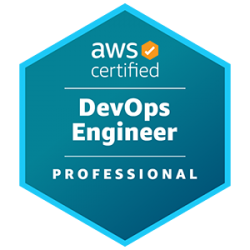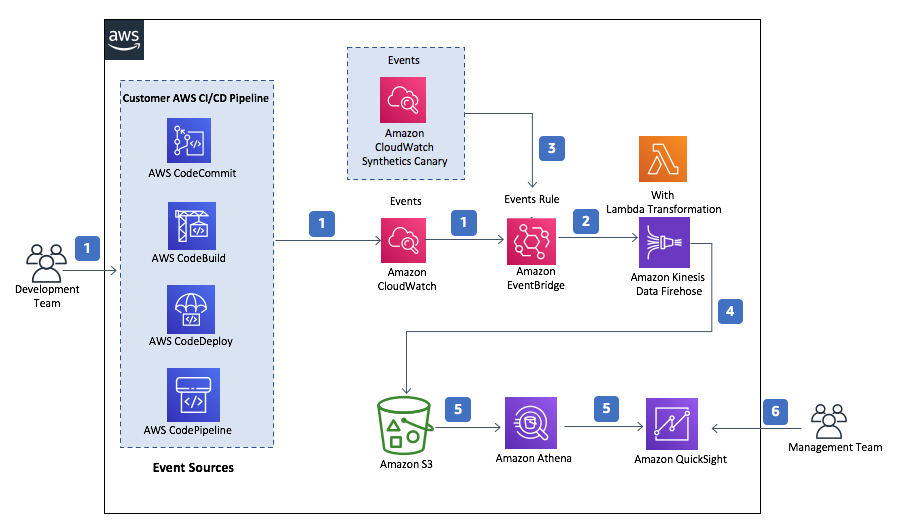Obiettivi | Certificazione | Contenuti | Tipologia | Prerequisiti | Durata e Frequenza | Docenti | Modalità di Iscrizione | Calendario

Il Corso Advanced Developing on AWS (ADVDEV) guida i Partecipanti attraverso un percorso pratico e approfondito, focalizzato sulla rifattorizzazione di un’applicazione monolitica legacy in un’architettura microservizi serverless, utilizzando una varietà di servizi AWS. Durante il corso, i Partecipanti esploreranno concetti chiave come i Sei R della migrazione, la Metodologia dell’Applicazione a Dodici Fattori e stili e pattern architetturali, mentre guadagnano familiarità con servizi AWS come AWS Lambda, API Gateway, AWS Secrets Manager, AWS CloudFormation e AWS Elastic Beanstalk. Attraverso dimostrazioni e laboratori pratici, il corso enfatizza l’applicazione pratica di concetti come DevOps, CI/CD, gestione dei segreti, e microservizi utilizzando Lambda e API Gateway. Il corso contribuisce alla preparazione dell’esame di Certificazione AWS Certified DevOps Engineer – Professional.
Contattaci ora per ricevere tutti i dettagli e per richiedere, senza alcun impegno, di parlare direttamente con uno dei nostri Docenti (Clicca qui)
oppure chiamaci subito al nostro Numero Verde (800-177596)
Obiettivi del corso
Di seguito una sintesi degli obiettivi principali del Corso Advanced Developing on AWS (ADVDEV):
- Analizzare e destrutturare un’applicazione monolitica, identificando punti logici o programmatici per la migrazione verso servizi AWS.
- Applicare i concetti e i passi della metodologia Twelve-Factor Application durante la migrazione da un’architettura monolitica.
- Raccomandare i servizi AWS appropriati per sviluppare un’applicazione cloud-native basata su microservizi.
- Utilizzare l’API, CLI e SDK di AWS per monitorare e gestire i servizi AWS.
- Migrare un’applicazione monolitica verso un’applicazione microservizi utilizzando i 6 R della migrazione.
Certificazione del corso
Esame AWS Certified DevOps Engineer – Professional;
L’esame di certificazione AWS Certified DevOps Engineer – Professional (DOP-C02) è concepito per valutare le competenze avanzate dei candidati nell’implementazione e nella gestione di pipeline di DevOps su AWS. L’esame tratta argomenti quali l’integrazione continua e la distribuzione continua (CI/CD), l’automazione delle infrastrutture, la gestione delle configurazioni, il monitoraggio e la sicurezza.
L’obiettivo principale è assicurare che i candidati dimostrino una solida conoscenza delle best practice e delle soluzioni avanzate AWS per lo sviluppo e l’operatività di applicazioni. Durante l’esame, i candidati affronteranno tematiche relative all’adozione di strategie di DevOps, all’ottimizzazione delle performance delle applicazioni e alla gestione dei processi di deployment e infrastruttura.
Contenuti del corso
Module 1: The cloud journey
- Common off-cloud architecture
- Introduction to Cloud Air
- Monolithic architecture
- Migration to the cloud
- Guardrails
- The six R’s of migration
- The Twelve-Factor Application Methodology
- Architectural styles and patterns
- Overview of AWS Services
- Interfacing with AWS Services
- Authentication
- Infrastructure as code and Elastic Beanstalk
- Demonstration: Walk through creating base infrastructure with AWS CloudFormation in the AWS console
- Hands-on lab 1: Deploy your monolith application using AWS Elastic Beanstalk
Module 2: Gaining Agility
- DevOps
- CI/CD
- Application configuration
- Secrets management
- CI/CD Services in AWS
- Demonstration: Demo AWS Secrets Manager
Module 5: Monolith to MicroServices
- Microservices
- Serverless
- A look at Cloud Air
- Microservices using Lambda and API Gateway
- SAM
- Strangling the Monolith
- Hands-on lab: Using AWS Lambda to develop microservices
Module 6: Polyglot Persistence & Distributed Complexity
- Polyglot persistence
- DynamoDB best practices
- Distributed complexity
- Step functions
Module 5: Resilience and Scale
- Decentralized data stores
- Amazon SQS
- Amazon SNS
- Amazon Kinesis Streams
- AWS IoT Message Broker
- Serverless event bus
- Event sourcing and CQRS
- Designing for resilience in the cloud
- Hands-on lab: Exploring the AWS messaging options
Module 6: Security and Observability
- Serverless Compute with AWS Lambda
- Authentication with Amazon Cognito
- Debugging and traceability
- Hands-on lab: Developing microservices on AWS
- Hands-on lab 8: Automating deployments with Cloud Formation
Tipologia
Corso di Formazione con Docente
Docenti
I docenti sono Istruttori accreditati Amazon AWS e certificati in altre tecnologie IT, con anni di esperienza pratica nel settore e nella Formazione.
Infrastruttura laboratoriale
Per tutte le tipologie di erogazione, il Corsista può accedere alle attrezzature e ai sistemi presenti nei Nostri laboratori o direttamente presso i data center del Vendor o dei suoi provider autorizzati in modalità remota h24. Ogni partecipante dispone di un accesso per implementare le varie configurazioni avendo così un riscontro pratico e immediato della teoria affrontata. Ecco di seguito alcuni scenari tratti dalle attività laboratoriali:

Dettagli del corso
Prerequisiti
Si consiglia la partecipazione al Corso Developing on AWS.
Durata del corso
Durata Intensiva 3gg.
Frequenza
Varie tipologie di Frequenza Estensiva ed Intensiva.
Date del corso
- Advanced Developing on AWS (Formula Intensiva) – Su richiesta – 9:00 – 17:00
Modalità di iscrizione
Le iscrizioni sono a numero chiuso per garantire ai tutti i partecipanti un servizio eccellente. L’iscrizione avviene richiedendo di essere contattati dal seguente Link, o contattando la sede al numero verde 800-177596 o inviando una richiesta all’email [email protected].


